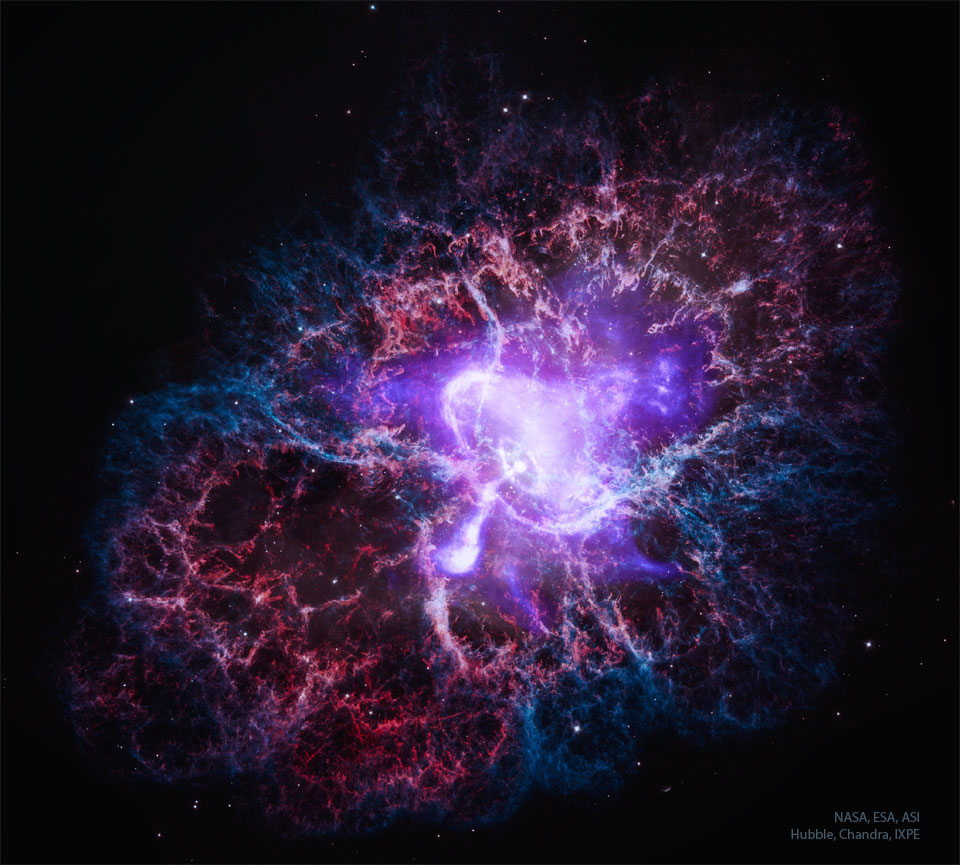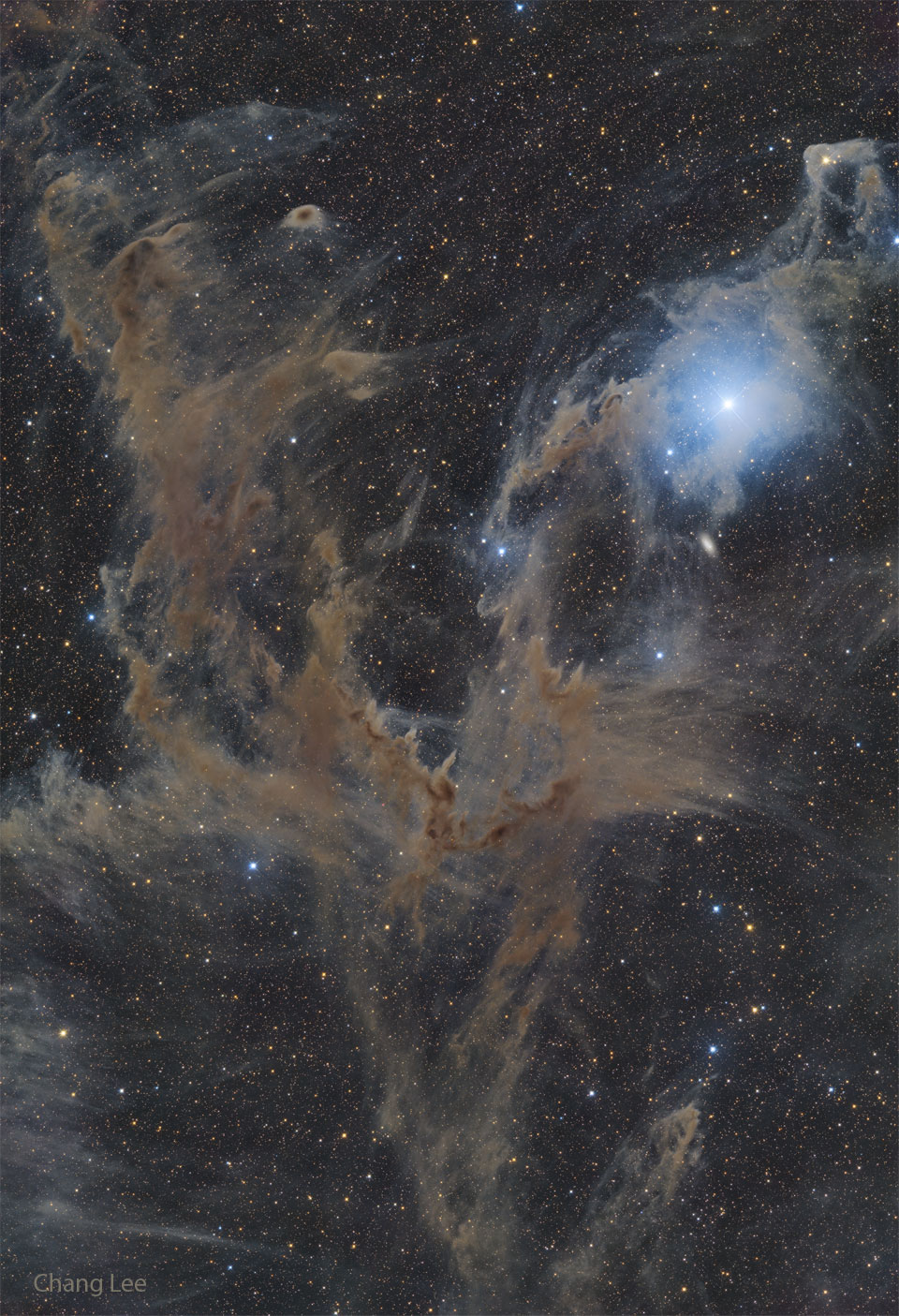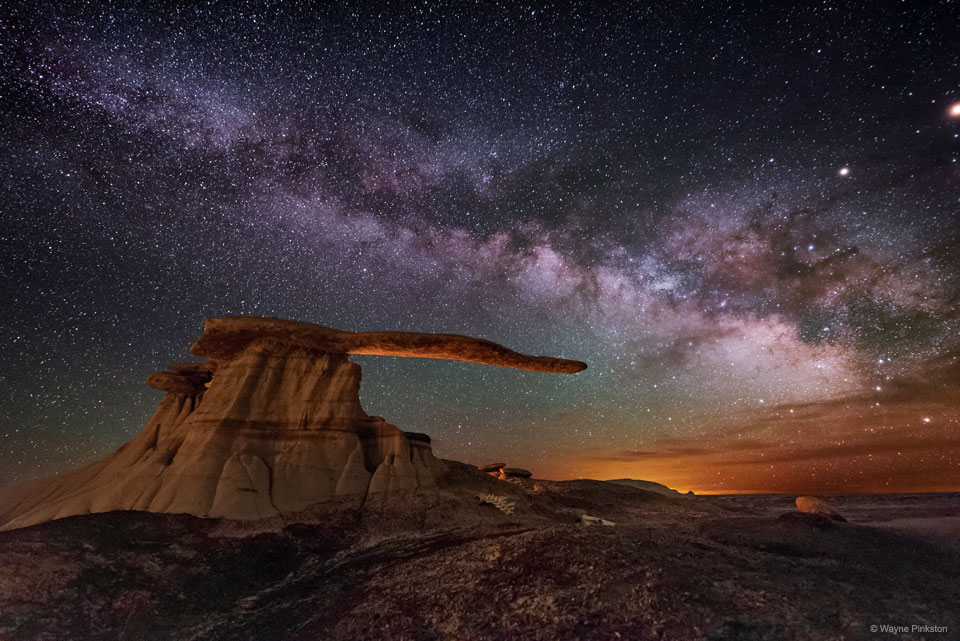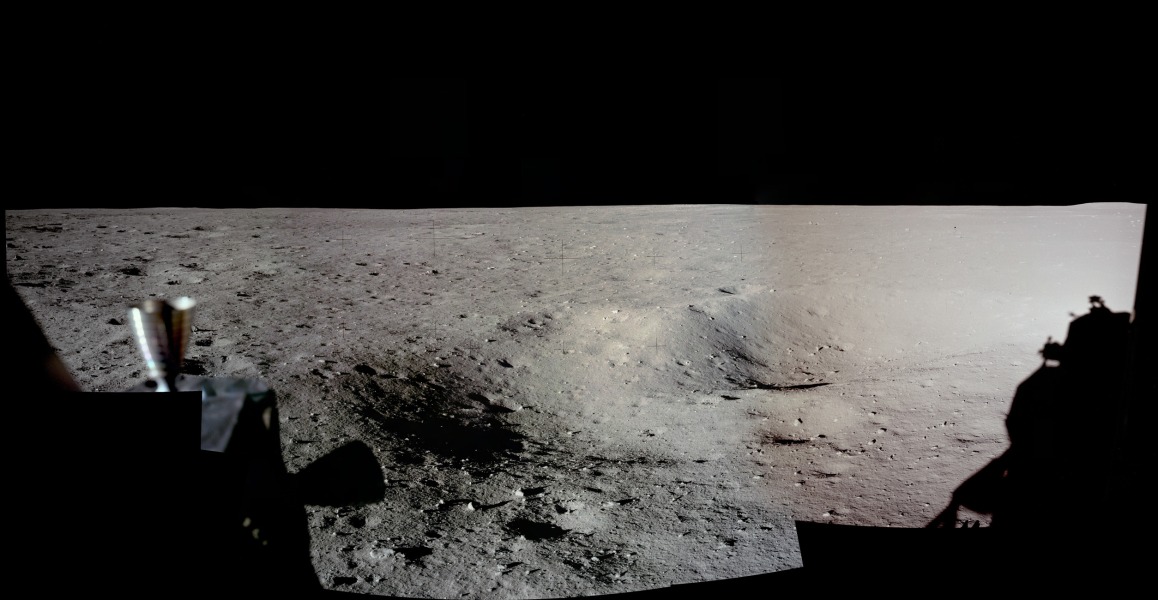Nombre total de pages vues
23/07/2024
SANTé/MEDECINE - Alexander Fleming - découvreur de la pénicilline
ASTRONOMY - The Crab Nebula from visible to X-Ray
2024 July 23
Image Credit: NASA, ESA, ASI, Hubble, Chandra, IXPE
Explanation: What powers the Crab Nebula? A city-sized magnetized neutron star spinning around 30 times a second. Known as the Crab Pulsar, it is the bright spot in the center of the gaseous swirl at the nebula's core. About 10 light-years across, the spectacular picture of the Crab Nebula (M1) frames a swirling central disk and complex filaments of surrounding and expanding glowing gas. The picture combines visible light from the Hubble Space Telescope in red and blue with X-ray light from the Chandra X-ray Observatory shown in white, and diffuse X-ray emission detected by Imaging X-ray Polarimetry Explorer (IXPE) in diffuse purple. The central pulsar powers the Crab Nebula's emission and expansion by slightly slowing its spin rate, which drives out a wind of energetic electrons. The featured image released today, the 25th Anniversary of the launch of NASA's flagship-class X-ray Observatory: Chandra.
22/07/2024
INVENTIONS DE DEMAIN - Rouler...Puis s'envoler
ASTRONOMY - Chamaeleon Dark Nebulas
2024 July 22
Image Credit & Copyright: Chang Lee
Explanation: Sometimes the dark dust of interstellar space has an angular elegance. Such is the case toward the far-south constellation of Chamaeleon. Normally too faint to see, dark dust is best known for blocking visible light from stars and galaxies behind it. In this 36.6-hour exposure, however, the dust is seen mostly in light of its own, with its strong red and near-infrared colors creating a brown hue. Contrastingly blue, the bright star Beta Chamaeleontis is visible on the upper right, with the dust that surrounds it preferentially reflecting blue light from its primarily blue-white color. All of the pictured stars and dust occur in our own Milky Way Galaxy with one notable exception: the white spot just below Beta Chamaeleontis is the galaxy IC 3104 which lies far in the distance. Interstellar dust is mostly created in the cool atmospheres of giant stars and dispersed into space by stellar light, stellar winds, and stellar explosions such as supernovas.
SANTé/MEDECINE - Karl Landsteiner : découvreur des groupes sanguins
21/07/2024
INVENTIONS DE DEMAIN - Twitter par la pensée
ASTRONOMY - King of Wings Hoodoo under the Milky Way
2024 July 21
Image Credit & Copyright: Wayne Pinkston (LightCrafter Photography)
Explanation: This rock structure is not only surreal -- it's real. Perhaps the reason it's not more famous is that it is smaller than one might guess: the capstone rock overhangs only a few meters. Even so, the King of Wings outcrop, located in New Mexico, USA, is a fascinating example of an unusual type of rock structure called a hoodoo. Hoodoos may form when a layer of hard rock overlays a layer of eroding softer rock. Figuring out the details of incorporating this hoodoo into a night-sky photoshoot took over a year. Besides waiting for a suitably picturesque night behind a sky with few clouds, the foreground had to be artificially lit just right relative to the natural glow of the background. After much planning and waiting, the final shot, featured here, was taken in May 2016. Mimicking the horizontal bar, the background sky features the band of our Milky Way Galaxy stretching overhead.
20/07/2024
SANTé/MEDECINE - René-Théophile-Hyacinthe Laennec : inventeur du stéthoscope
ASTRONOMY - Apollo 11 Landing Panorama
2024 July 20
Image Credit: Neil Armstrong, Apollo 11, NASA
Explanation: Have you seen a panorama from another world lately? Assembled from high-resolution scans of the original film frames, this one sweeps across the magnificent desolation of the Apollo 11 landing site on the Moon's Sea of Tranquility. The images were taken 55 years ago by Neil Armstrong looking out his window on the Eagle Lunar Module shortly after the July 20, 1969 landing. The frame at the far left (AS11-37-5449) is the first picture taken by a person on another world. Thruster nozzles can be seen in the foreground on the left (toward the south), while at the right (west), the shadow of the Eagle is visible. For scale, the large, shallow crater on the right has a diameter of about 12 meters. Frames taken from the Lunar Module windows about an hour and a half after landing, before walking on the lunar surface, were intended to document the landing site in case an early departure was necessary.
19/07/2024
INVENTIONS DE DEMAIN - Le téléphone de fiston sur écoute
SANTé/MEDECINE - CANCER - 12 AVANCEES REVOLUTIONNAIRES - 7. Des biopsies liquides et synthétiques moins invasives et plus rapides
Les biopsies classiques nécessitent le prélèvement de tissu, souvent par chirurgie. Aujourd’hui, la biopsie liquide offre une alternative pl...

-
2022 September 26 All the Water on Planet Earth Illustration Credit: Jack Cook, Adam Nieman, Woods Hole Oceanographic Institution ; Data ...
-
2025 May 11 The Surface of Venus from Venera 14 Image Credit: Soviet Planetary Exploration Program , Venera 14 ; Processing & Copyri...









